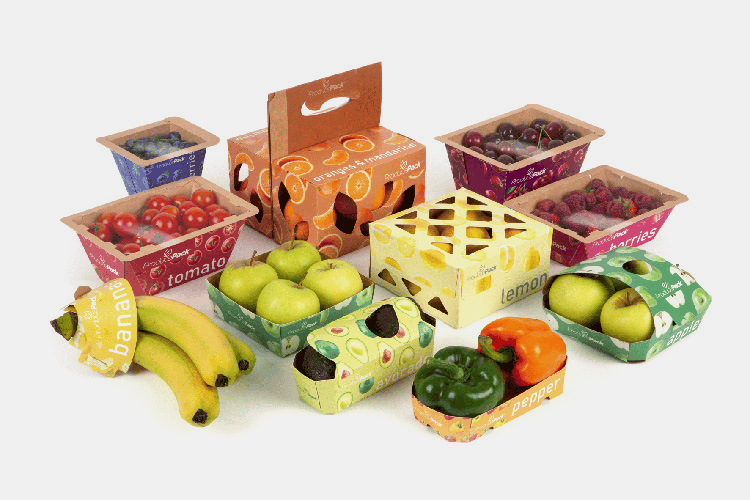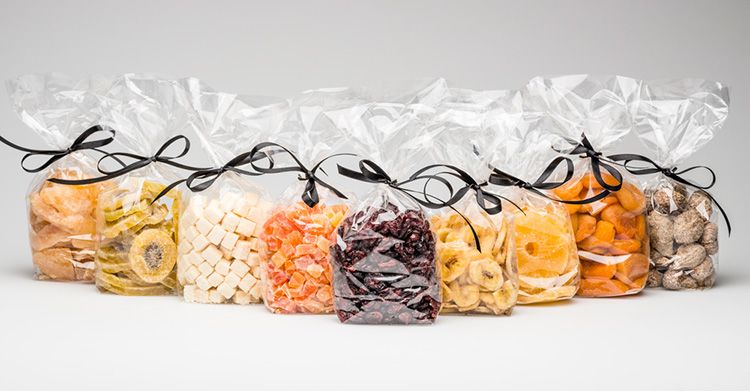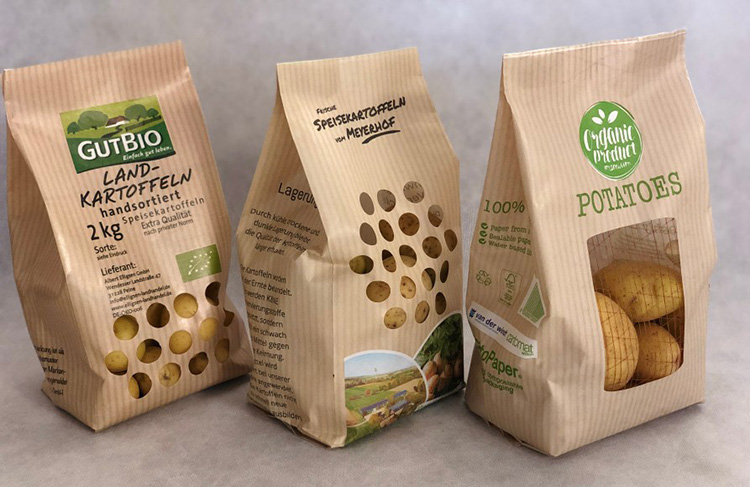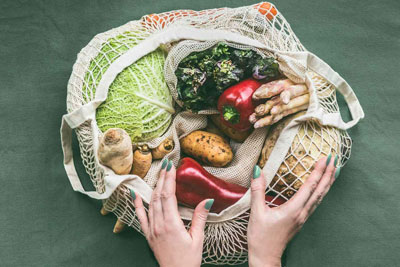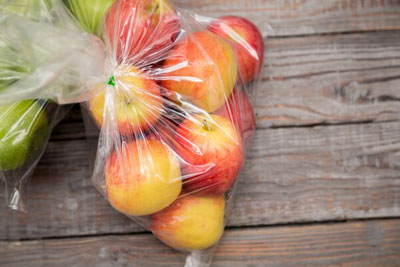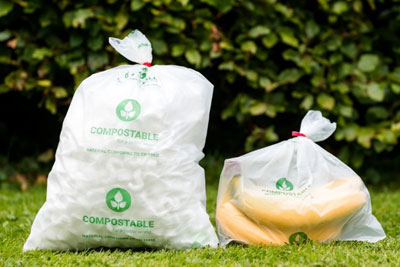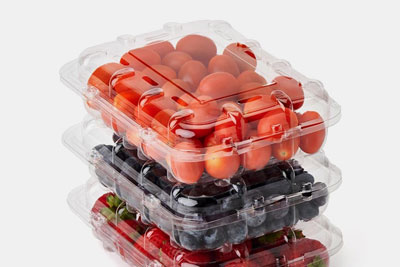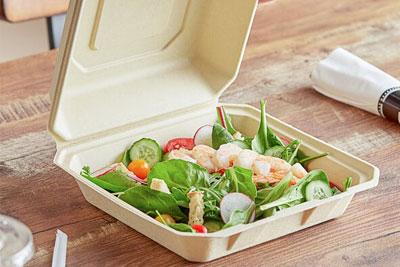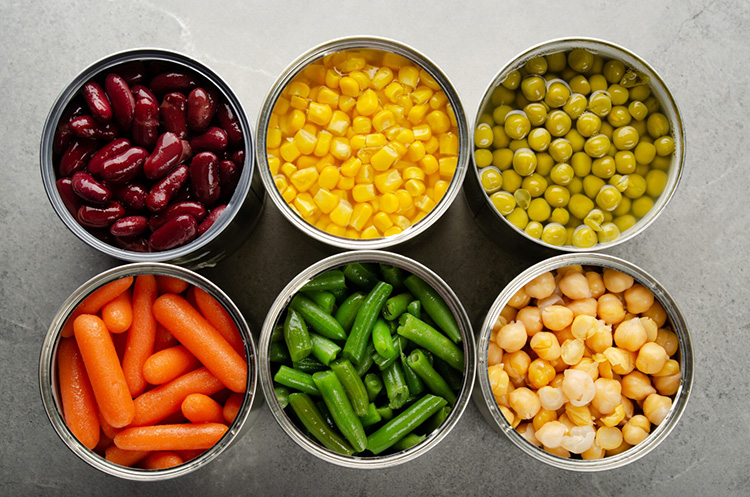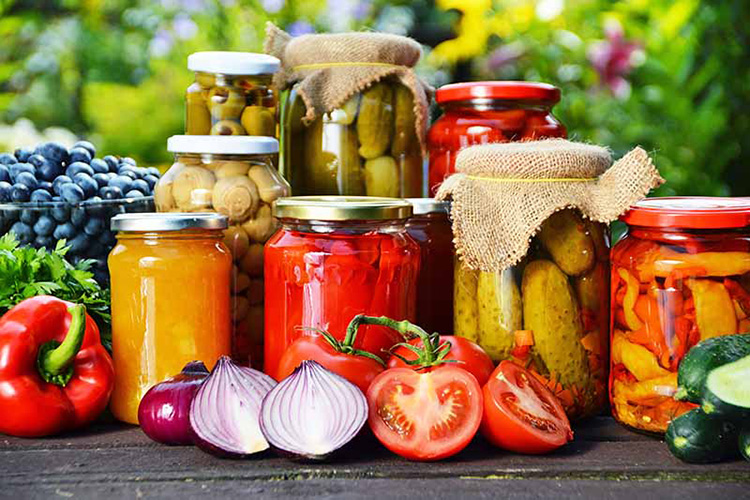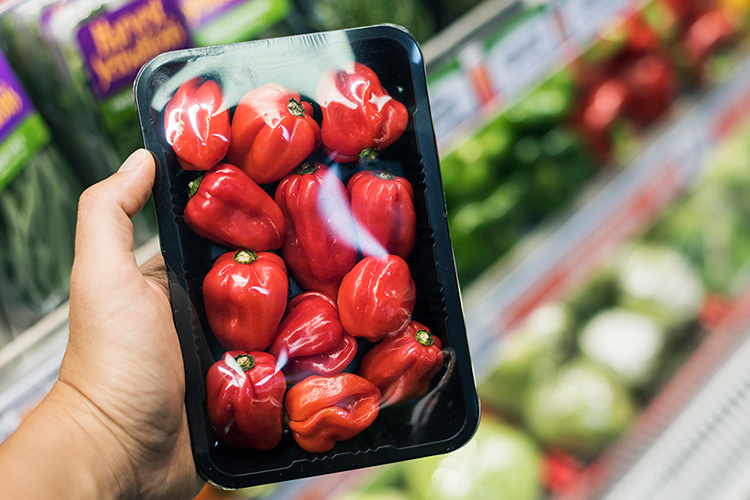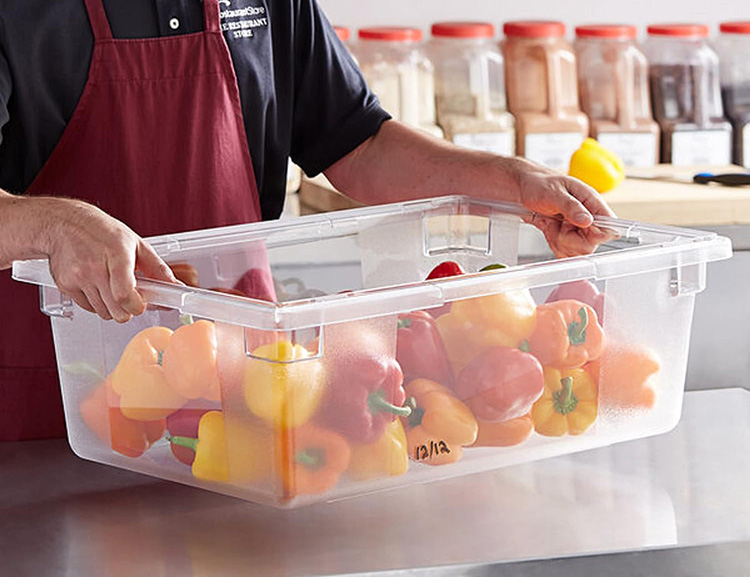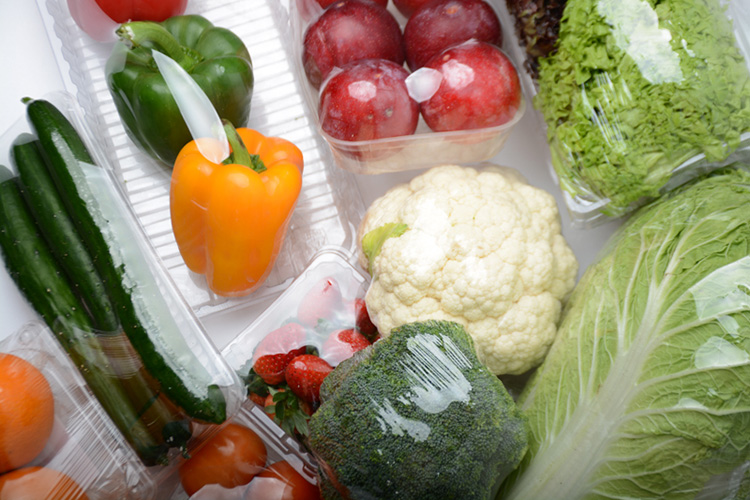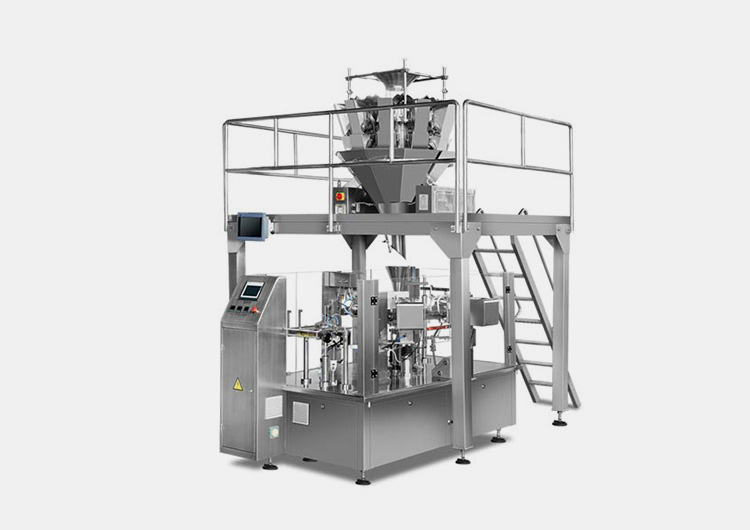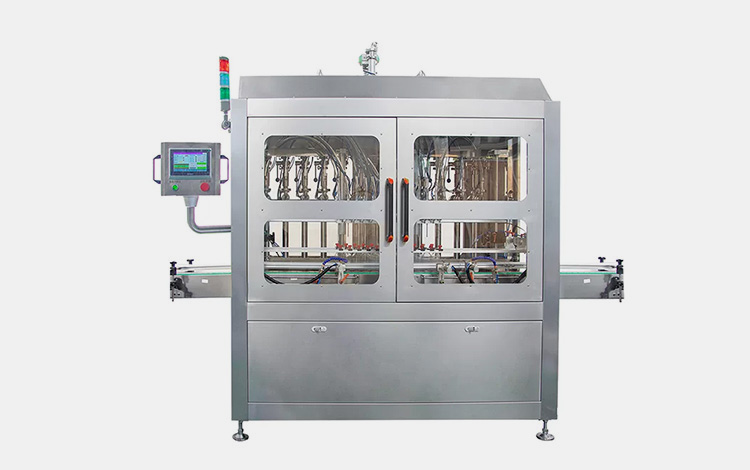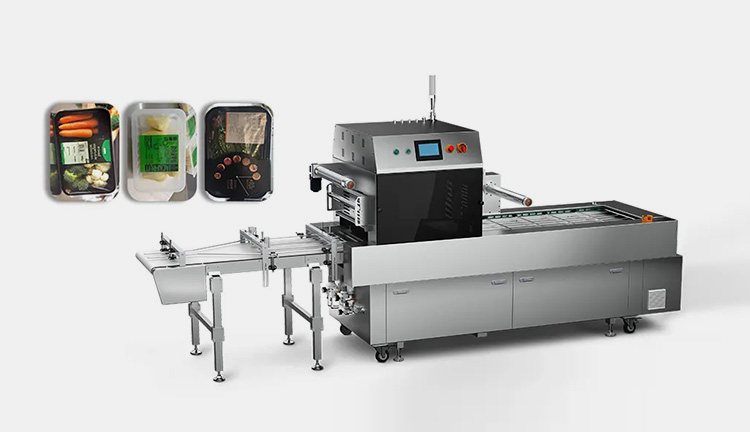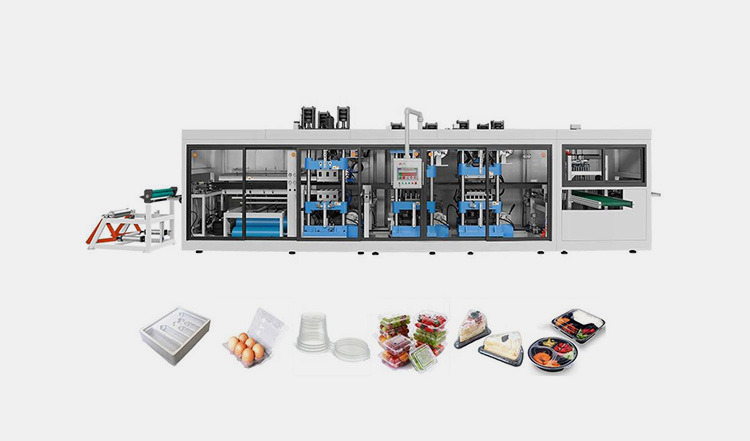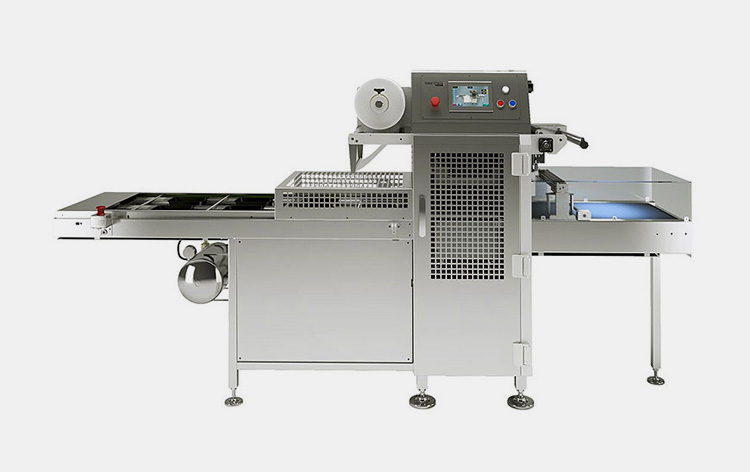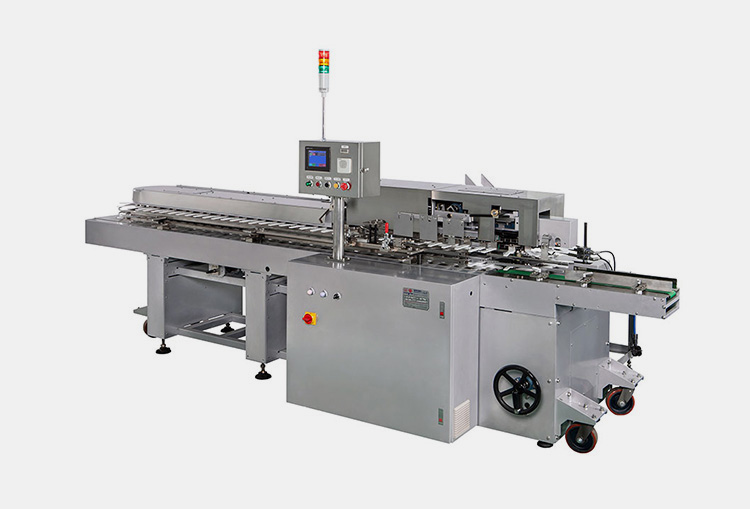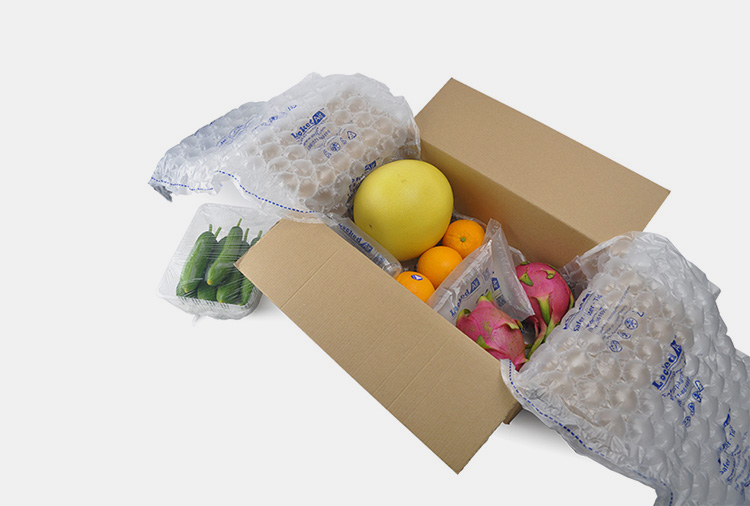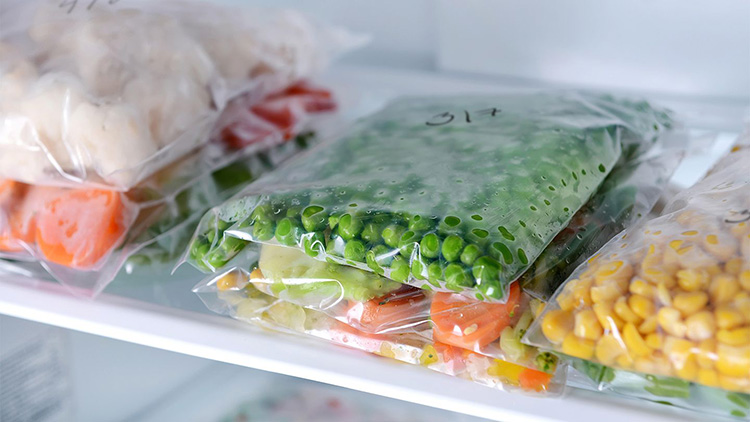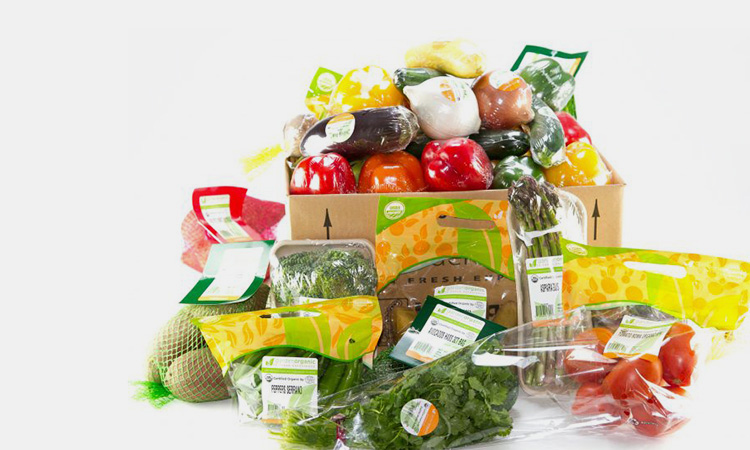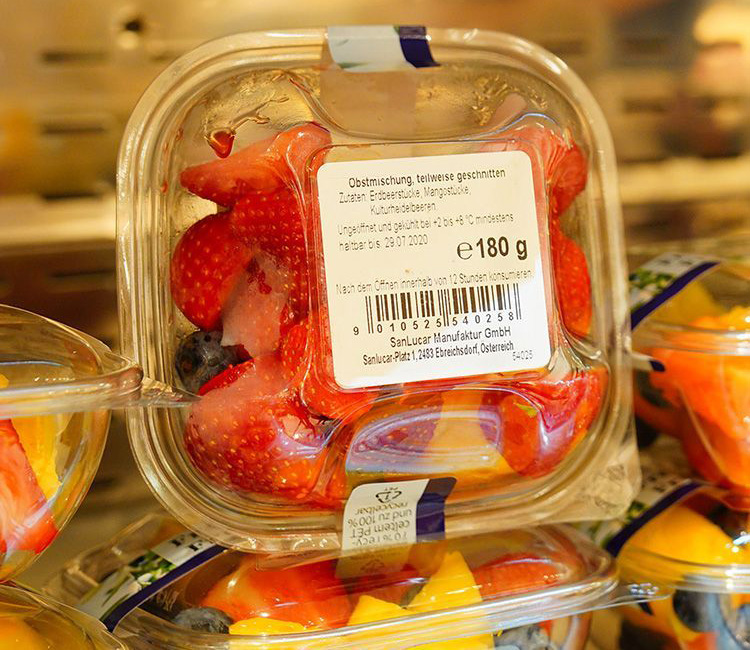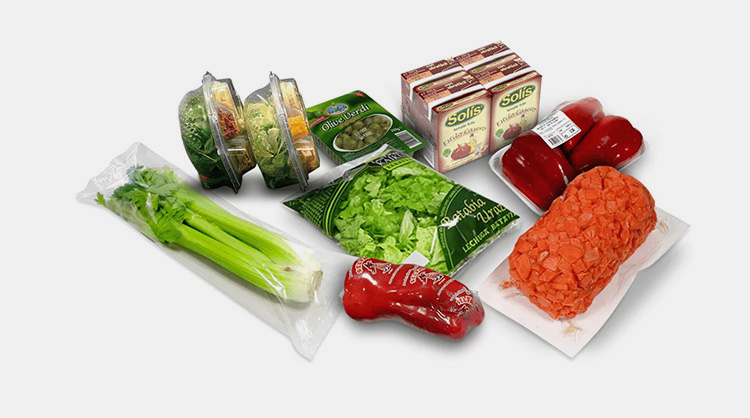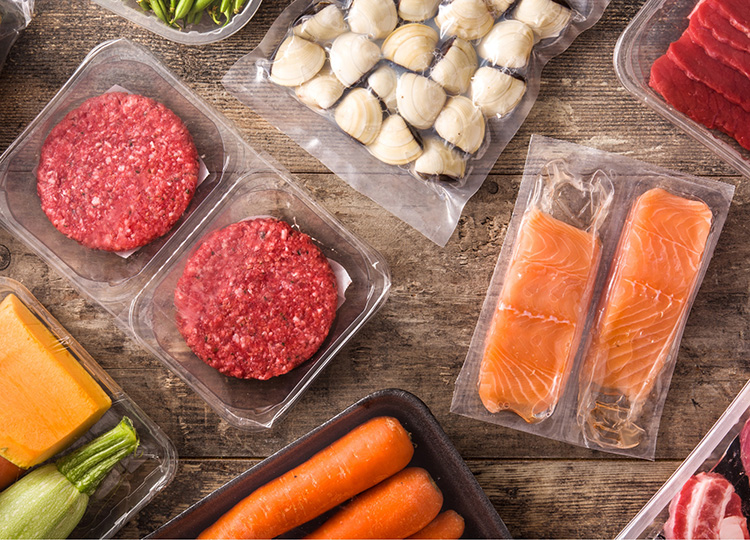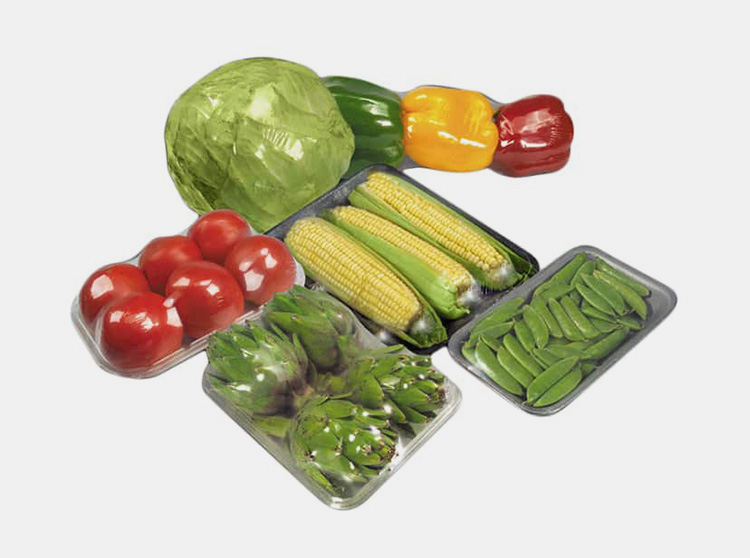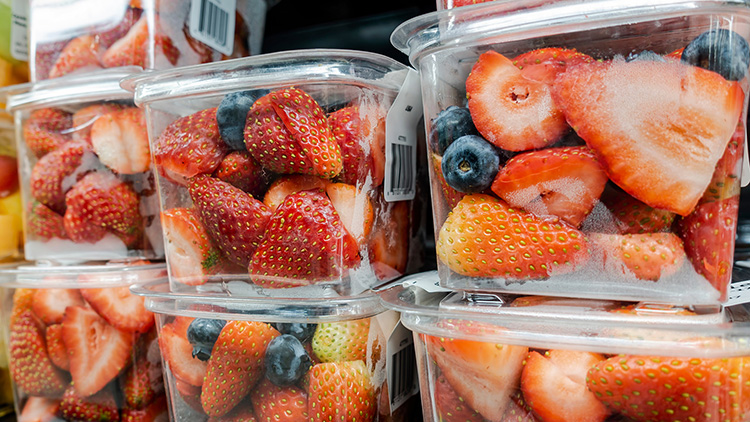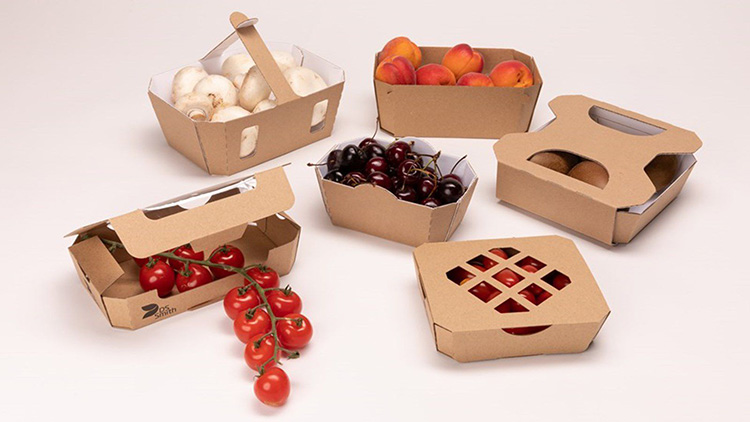Fresh Produce Packaging: The Complete FAQ Guide In 2025
Do you know you have better chances of getting important nutrients like vitamins and minerals if you eat fresh food? Today, people are going back towards their roots and started eating healthy and fresh. But fresh food is produced at far away places. How it remains fresh all the time during shipment. Well, the answer is its packaging. The rise in demand for fresh food led to higher demands for Fresh Produce Packaging.
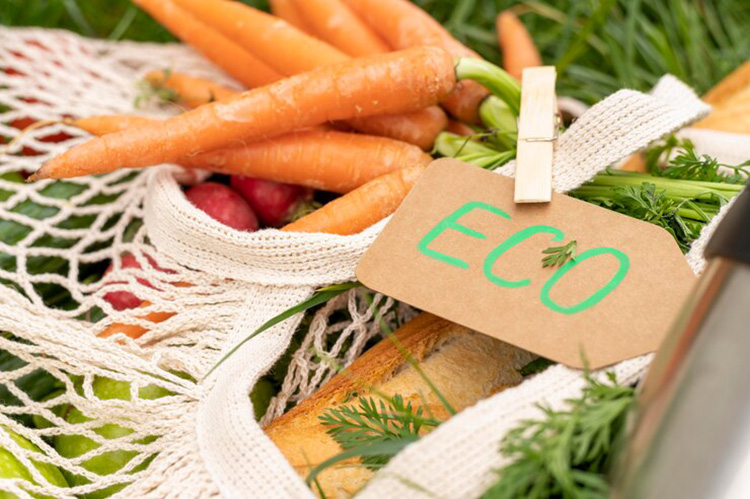
This business is gaining traction and the market of Fresh Produce Packaging has become crowded. However, if you are interested in starting your own Fresh Produce Packaging business and want to stand out among your competitors, then carefully read this informative blog. In this blog, we will discuss different features and characteristics of Fresh Produce Packaging.
1.What is Meant by Fresh Produce Packaging?
Fresh Produce Packaging- Picture Courtesy: BFBi
Fresh produce travels a long way from the harvest fields to kitchens therefore, it is appropriately enclosed and contained with sturdy and durable containers such as bags, trays, clamshells, and many more. The packaging of fresh produce is manufactured with strong impermeable materials that can withstand tough weather, such as sunshine or rain.
Moreover, fresh produce packaging is the way of preparing these products for handling, transportation, distribution, retailing, and end-usage. Fresh produce packaging is vital in protecting the freshness, nutritional quality, taste, texture, and aroma of fresh produce. Also, it prevents the harvest from being wasted.
2.What are the advantages of fresh produce packaging?
Fresh Produce Packaging- Picture Courtesy: XL Plastics
Fresh produce packaging has numerous advantages, such as;
| Protect from contamination | It protects from dirt, pests, and handling during transportation |
| Freshness Maintenance | It creates a barrier against environmental factors like air, moisture, and light to keep fruits and vegetables fresh. |
| Consumer convenience | Pre-packaged produce gives consumers convenience by saving them the time and trouble of picking out and handling individual pieces. |
| Labeling | Consumers can benefit from packaging labeling by making informed choices and ensuring correct preparation and storage. |
| Minimal Impact on the Environment | Options for sustainable packaging, like biodegradable or compostable materials, help minimize the negative effects of waste from packaging on the environment as a whole. This is consistent with the rising concern over sustainability and environmentally friendly methods. |
| Longer Shelf life | Fresh produce may be moved over greater distances and stored for longer periods of time with the help of proper packaging, which reduces food waste. |
| Ease of Transportation | Produce is transported with less risk of breakage or bruising because of the packaging. |
| Brand Visibility | Marketing and branding are assisted by packaging. Consumers can be drawn in, products can stand out on the shelf, and brands can become more well-known through appealing packaging and labeling. |
| Smart Packaging | Customers can get real-time information about the product's origin, freshness, and handling instructions from smart packaging with QR codes or RFID tags. |
3.What Kind of Foods Are Packaged in Fresh Produce Packaging?
Fresh Produce Packaging- Picture Courtesy: Potato News
Fresh produce means the harvest that is recently gathered and preservatives are not added to it. It also includes meat that is recently butchered. Different kinds of food are packed inside the fresh food packaging, such as:
- Raw vegetables and fruits
- Meat (poultry, beef, mutton, fish)
- Dairy products (milk, cream, butter)
- Eggs
- Sauces, pastes
4.What are the Formats of Fresh Produce Packaging?
As fresh produce involves a variety of products there are quite a range of formats available for fresh food packaging. These are detailed below for your understanding:
Bags
This is the most popular and convenient packaging style for fresh produce packaging. Bags often come with handles for ease of carrying.
| Paper Bags
Paper Bags for Fresh Produce- Picture Courtesy: Escape Authority |
This has a beautiful brown look and gives an earthy and rustic appearance. It is easily labelled with a sticker and printed on with stylish patterns. Farmers often use paper bags for packaging potatoes and onions. |
| Mesh Bags
Mesh Bags for Fresh Produce- Picture Courtesy: Treehugger |
These bags are made of cotton and are highly stretchable and they are used by markets to store vegetables and fruits. Mesh bags are sturdy and have airflow that is good for onions. |
| Plastic Bags
Plastic Bags for Fresh Produce |
Plastic bags are a widely used option for packaging fresh produce. It is clear thus quality of fresh produce can be easily inspected. Moreover, packaging fresh produce in plastic bags has minimal expense. |
| Compostable Bags
Compostable Bags for Fresh Produce- Picture Courtesy: Polybags |
These bags have a slight greenish look and are slightly opaque. However, these are the best options for sustainable packaging. Compostable bags are identical in appearance to plastic bags. However, they are biodegradable meaning they are decomposed more easily. |
Clamshells
It consists of two pieces that are joined together by the hinge part. It offers more protection to the fresh produce as it surrounds it.
| Plastic Clamshells
Plastic Clamshell Packaging For Fresh Produce- Picture Courtesy: Good Start Packaging |
It is the earliest form of clamshell packaging and is best known for packaging fresh produce. These are found at every place where fresh produce is sold. Plastic in these clamshells offers protection against mechanical damage, such as bruising and marring. Its flat surface offers a large area for marketability and labelling. With clear packaging, end-users can easily monitor the quality of fresh produce. |
| Compostable Clamshells
Compostable Clamshell Packaging For Fresh Produce- Picture Courtesy: WebstaurantStore |
They have the same design configuration as plastic clamshells but are made of plant-based organic materials that offer better recyclability. They have interlocking joints that close these clamshells. Moreover, it has gained traction in recent years and is best known for packaging raw eggs and hot food. |
Can
Can Packaging for Fresh Produce- Picture Courtesy: Plant-Based Juniors
They are cylindrical or round-shaped containers and come with lids that provide airtight protection. Cans are rigid containers and are stackable. They are used for storing beans, nuts, dried fruits, sauces, jams, etc.
Jars
Jar Packaging for Fresh Produce- Picture Courtesy: Foodal
They are usually made with plastic or glass and are often re-sealable due to twisting caps. Jars have various configuration, for instance, paragon jars are taller and are used for storing olives, economic jars are round and usually stores creams and butter. Hexagon jars with six sides are best for packaging honey and sauces.
Trays
Tray Packaging for Fresh Produce
These are flat containers and are employed for packaging singular items such as lettuce, spinach, or salads. They are also used for store-cut vegetables and fruits. Trays have snap-on lids and are fully sealed with plastic wrap.
Bundle and Ties
Bundle and Tie Packaging for Fresh Produce- Picture Courtesy: Food & Wine
It is the minimalist fresh produce packaging that involves bundling of fresh green and herbs including stalks with thread or twine tries and also with rubber bands. It is a cost-effective option that allows consumers to smell the aroma of different packaged herbs. Moreover, it also produces less waste, consequently having a low impact on the environment.
Bins
Bin Packaging For Fresh Produce- Picture Courtesy: WebstaurantStore
They are made with sturdy and robust plastic materials and are usually used for packaging bulk quantities of fresh produce. It is an ideal choice for shipping fresh produce. Furthermore, they have the benefit of reusing. They consist of snap-on lids that are closed when not in use.
Stretch Film Overwraps
Stretch Film Overwrap Packaging For Fresh Produce- Picture Courtesy: Thong Guan
They are used in combination with tray packaging. It is a cost-effective solution for packaging an array of fresh produce such as vegetables, fruits, mushrooms, meat, chicken pieces, etc. Its transparency is essential for visually inspecting fresh produce for damage.
Boxes
Box Packaging For Fresh Produce- Picture Courtesy: Swiftpak
These are large-capacity containers that are often used for storing fresh produce and shipping it from farms to cities and overseas. These are durable and robust containers usually manufactured from paperboard and cardboard. Boxes are stackable thus, saving space during transportation.
5.What Machines Process Fresh Produce Packaging?
There is a huge variety of machines employed for processing fresh produce packaging because of the diversity of fresh produce packaging styles available in the market. Each of these machines is discussed below for your information.
Vertical Form Fill and Seal Machine
It is the most widely utilized machine for packaging fresh produce in bags. This machine is readily employed in fresh produce packaging units because of its smaller footprint and its high productivity. Using film roll, you can create bags according to your needs using this machine. This machine is used for packing precut fresh produce as well as beans or peans in bags.
Working Principle
The fresh produce is placed into the hopper while the film is placed on the unwinding reel. After moving over a roller, it goes to forming tube, where the film is transformed into a tubular bag. The fresh produce is fed from the top and finally sealing elements hermetically seal the bag.
Horizontal Form Fill and Seal Machine
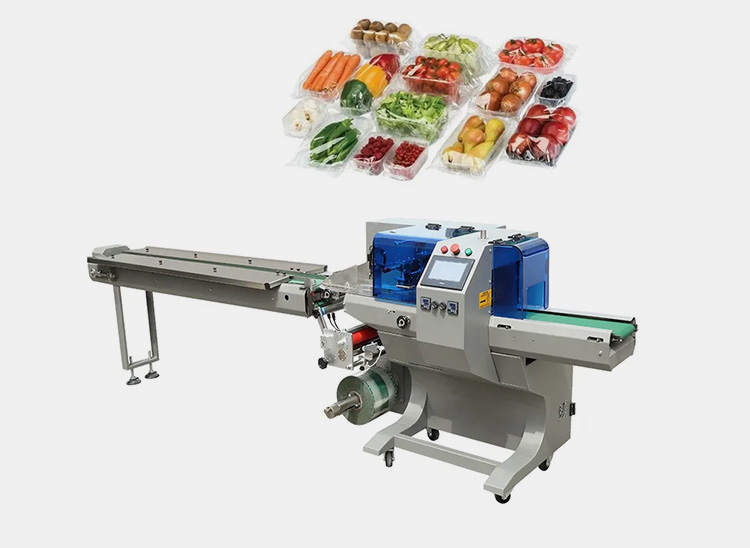
Horizontal Form Fill and Seal Machine
The operation in this machine occurs in the horizontal direction hence, the name horizontal form fill and seal machine. It is great for packaging delicate fresh produce that can get damaged if packed vertically. This machine usually packages large fruits and vegetables in pouches.
Working Principle
The film is placed on the reel unwinder and after it is released from the unwinder it is moved to the forming plough where the film is fashioned into the bag by folding, wrapping, and sealing the bottom and side edges. In the next step, the fresh produce is loaded inside the partially-formed bag. In the end, heated sealing jaws are employed for fully closing the filled bag.
Premade Pouch Packaging Machine
Premade Pouch Packaging Machine- Picture Courtesy: Lenis Machine Inc.
This machine as the name suggests, fills pre-formed bags with fresh produce. It is a high-speed unit that automates production lines. Paper, plastic, or compostable bags are easily processed by this machine. Typically, this machine is available in a rotary configuration.
Working Principle
In the beginning, the fresh produce is fed inside the hoppers while empty bags are loaded on the bag holder. Grippers carry these bags one by one to the inflating area where gases are blown inside the bags. Next, bags are transported to a filling station where a preprogrammed amount of fresh produce is fed into bags. Finally, sealing bars, seal the filled bags.
Jar/Can Filling Machine
Jar Filling Machine- Picture Courtesy: vkpak
This machine consists of different kinds of pneumatic, pressure, gravity, and auger fillers to load saucy, pasty fresh food as well as granular items such as corn, peas, beans, and precut vegetables, meat chunks inside jars or cans. It is a robust machine capable of handling a variety of fresh produce through simple changeovers.
Working Principle
First, usually at the start of packaging of next batch, a bulk quantity of fresh produce is placed inside the machine cone-shaped hopper. Cans or jars are positioned on the conveyor either manually or using a container feeding machine. Once a container is detected under the filling nozzle, the filling process starts and on feeding the required amount of fresh produce, the filling process stops. The container is then moved to the capping area where the cap or lid is fixed onto the filled container.
Stretch Wrap Packaging Machine
Stretch Wrap Packaging Machine
This machine is often used in combination with a tray-filling machine and can seal fresh produce containers with different types of film such as PVC, PE, and SS. This machine reduces film consumption and wastage by controlling film length. Clear plastic film used by this machine, offers fresh produce packaging an aesthetically pleasing appearance.
Working Principle
The tray or other container containing fresh produce is placed on the conveyor one after the other. These containers one by one travel to the stretch film wrapping area. At this station, stretch film is wrapped around the edges of the container and is heated. The film melts to create a permanent bond with the fresh produce container.
Clamshell Packaging Machine
Clamshell Packaging Machine
Clamshell packaging is increasingly popular in fresh produce packaging because of its utilitarian design. The clamshell packaging machine is ideal for filling small fresh produce like strawberries, blackberries, greens such as lettuce, spinach, precut fruits and vegetables in clamshell. This machine can handle both plastics as well as thermoform clamshells.
Working Principle
Compostable materials or plastics are heated and placed into clamshell moulds to acquire the shape of a clamshell. Fresh produce placed on conveyors reaches the filling station. Here, the gripper loads fresh produce inside the clamshell. Afterwards, the top part of the clamshell is heated to fuse with the lower piece and to create airtight fresh produce packaging.
Tray Fill and Seal Machine
Tray Fill and Seal Machine- Picture Courtesy: Vortech Food Machinery
It is also called a tray lidding machine and it is a high-end machine perfect for packaging both fresh and frozen food. The tray fill and seal machine automates the production line and is a flexible unit processing tray different in sizes, depths, and designs. Moreover, some models of this machine are equipped with MAP units that maintain the quality of fresh produce throughout retailing and circulation.
Working Principle
First, products are loaded inside the hopper while trays are placed on the conveyors. As soon as the trays reach the filling station, the fresh produce is fed into the trays. Afterwards, they are indexed and go to the sealing station. The seal plate lifts the tray and presses it against the heated film. This heated film fuses to the ends of the trays and finally, this sealed tray passes to the cooling station where the temperature of the tray container is reduced.
Cartoning Machine
Cartoning Machine- Picture Courtesy: Benison & Co., Ltd
This machine also referred to as a cartoner, is a versatile machine usually employed for bulk-capacity packaging of fresh produce. This machine loads large volumes of fresh produce such as vegetables or fruits for mass shipment. Moreover, it is also used for tertiary packaging of trays, pouches, clamshells, and pouches in cardboard or paperboard boxes for transportation.
Working Principle
A large stack of folded cartons is placed inside the carton magazine from where the gripper picks one folded carton and erects it by joining lower sides. Afterwards, fresh produce is loaded inside the erected carton. Next, the carton is closed by tucking in the end sides of the cartons. Finally, the glue is applied to the closed carton to permanently seal it.
6.What are the Requirements for Fresh Produce Packaging?
Fresh produce is a delicate product, requiring continuous control and special care throughout the distribution process to monitor the respiration rate of the fresh produce. To achieve this control, there are some requirements for fresh produce packaging:
Cushioning in Packaging
Cushioning In Fresh Produce Packaging- Picture Courtesy: LockedAir
Fresh produce is bruised or damaged easily for instance, raw eggs break upon contact with force, therefore fresh produce packaging should be such that it prevents mechanical damage to the fresh produce. It should be stackable and have some cushioning support. Different cushioning materials such as foam nets and single face corrugation are used for cushioning fresh product during transportation from farms.
Control of Microorganism Load
Safety Measures in Fresh Produce Packaging- Picture Courtesy: Everday Health
It is essential to include safety measures in fresh produce against microbes to prevent outbreaks of different bacterial species. There are different methods to stop microbial growth, such as cold treatment, application of chlorine, organic acid, and hydrogen peroxide-based solutions. etc.
Regulation of Enzymatic Activity and Ripening
Fresh Produce Packaging- Picture Courtesy: Indianapolis Fruit
In addition to all the above, fresh produce packaging should be such that it controls the enzymatic reactions and promotes on-time ripening. To aid in this aspect, nitric oxide is used to delay the ripening process. Since enzymatic reactions lessen the shelf-life of fresh produce, so, these are controlled by the introduction of carbon dioxide and calcium-based solutions.
7.What is Smart Fresh Produce Packaging?
Smart Fresh Produce Packaging- Picture Courtesy: Barotec
Tons of fresh produce are wasted due to rotting and microbial contamination. Thus, to overcome this problem, innovation has been made in fresh produce packaging to introduce smart sensors and indicators that employ an interactive technology for detecting the condition of fresh produce and informing users about the quality and safety of these products.
These smart sensors detect the temperature and humidity levels inside and outside of the fresh produce packaging. Moreover, it indicates spoilage, ripening, and gas leakage of the fresh produce. It also monitors the presence of bacterial growth and measures the level of ethylene gas in packaging. Refreshment sensors can also detect the leakage of contaminants from the micro-plastics in the fresh produce packaging.
8.Is fresh produce packaging the same as other Packaging?
Fresh Produce Packaging- Picture Courtesy: ULMA Packaging
Fresh produce packaging is majorly different from other kind of packaging. The reason is fresh produce are living things that respire and emit gases that cause their ripening. They often discolour, produce unpleasant odours, change texture and become gritty which makes them unfit for consumption.
Moreover, other food products contain preservatives that increase their expiratory period. There are no such preservatives in fresh produce packaging. Hence, manufacturers employ different methods, such as mould inhibitors and spraying ascorbic acids to extend the shelf-life of fresh produce and also prudently select fresh produce packaging materials that have little vents to allow on-time ripening while controlling respiration rate.
9.What is the role of nitrogen flush or vacuuming in fresh produce packaging?
Nitrogen Flushing in Fresh Produce Packaging- Picture Courtesy: Edinburgh Sensors
Nowadays, nitrogen flushing or vacuuming is routinely used while packaging fresh produce. Oxygen and water vapours are two main agents that deteriorate the quality and nutritional value of fresh produce. Oxygen causes the oxidation of vitamins and minerals which usually results in the browning of fresh produce. Furthermore, oxygen and humid condition boosts the growth of bacteria and fungus that leads to rotting and moulding of fresh produce.
Nitrogen flush or vacuum removes the oxygen and water vapours from the packaging. Nitrogen is an inert gas while vacuuming is a complete removal of air. Due to the absence of these culprits, nitrogen flush and vacuum extend the shelf-life of fresh produce and keep them fresh for a longer time.
10.What type of packaging keeps Produce the freshest?
Fresh Produce Packaging- Picture Courtesy: Shorr Packaging
Fresh Produce is the breathing commodity and respire thus releasing carbon dioxide in the packaging. The oxygen in the fresh produce packaging promotes the oxidation of fresh produce as well as the growth of microorganisms. This increases the discolouration of fresh produce and augments its spoilage.
Moreover, fresh produce releases various gases that shorten its shelf-life. To keep the fresh produce for a longer time, Modified Atmosphere Packaging (MAP) is used. Since fresh produce does not contain any additives, therefore, MAP plays a significant role in preserving the freshness of fresh produce. MAP is the collection of different techniques that sustain the atmosphere inside the packaging and decrease the rate of oxidation.
11.What Are The Future Trends Of Fresh Produce Packaging?
The term "fresh produce packaging" describes the materials and layout used to wrap, house, or display fresh fruits and vegetables for retail sale. Its future trends moving towards the following aspects such as:
Unadorned design:Unadorned packaging is gaining popularity since it uses less material and concentrates on the most important details.
Innovative materials:The emphasis is on going on creating creative, environmentally friendly substitutes, such as packaging manufactured from agricultural waste or plant-based plastics.
Conspicuous design:Vibrant and conspicuous designs are probably going to be used more frequently. This fashion seeks to draw attention to the goods and make it stand out on the shelves.
Edible packaging:The trends also moving towards the development of edible packaging composed of substances like starch or seaweed that will revolutionize the industry and drastically cut waste.
Interactive packaging:The future trends of fresh packaging might do more than just provide information. It's possible that augmented reality (AR) may be used, allowing customers to virtually interact with the produce, learn recipes, or get further advice.
12.How Long Does Fresh Packaging Last?
Fresh Produce Packaging- Picture Courtesy: Escape Authority
The shelf life of fresh product packaging depends on the following factors, including;
Types of Packaging Materials
Types of packaging materials play a crucial role in maintaining the shelf life of the product inside the package, these types include;
Plastic packaging:Plastic packaging helps to maintain the freshness of the packed materials by avoiding contact with air and moisture.
Biodegradable packaging:Although these materials are better for the environment, they cannot last as long as conventional plastic.
Storage Conditions
The longevity of fresh product packaging varies depending on a number of factors; for example,
Temperature:Storage temperature is an important factor. A refrigerator is a better choice to store because it can significantly increase the shelf life of fresh produce materials
Light:Certain vitamins and pigments in fruits and vegetables can degrade as a result of light. The produce's nutritional content can be maintained by using packaging that shields it from excessive light exposure.
Ventilation:Proper airflow is also an important factor that contributes to increasing or maintaining the shelf life of fresh produce items. Because at warmer temperatures or in humid situations, some packaging materials could be more prone to deterioration.
The product inside the packaging
Different fruits and vegetables have erratic shelf lives; some require long consumption whereas some require more fragile. The consideration for fresh packaging should be aligned with the specific needs of the product inside the packaging.
Conclusion
Nowadays, fresh produce packaging is trending because of the high demand of consumers for fresh produce. People want their daily dose of nutrients in the form of fresh produce because of their health-conscious approach. However, special care is taken while packaging fresh produce because of its delicate nature. Furthermore, special techniques such as MAP, nitrogen flushing, and vacuum are performed while packing fresh produce to maintain a consistent environment inside the packaging. Want to buy fresh produce packaging or a fresh produce packaging machine, you can check our Allpack website to browse our comprehensive machine and packaging catalogue.
Don't forget to share this post!
CONTACT US
Tell us your raw material and project budget to get quotations within 24 hours.
WhatsApp Us: +86 181 7101 8586
The Buyer's Guide
 Tell us your material or budget, we'll reply you ASAP within 24 hours
Tell us your material or budget, we'll reply you ASAP within 24 hours

